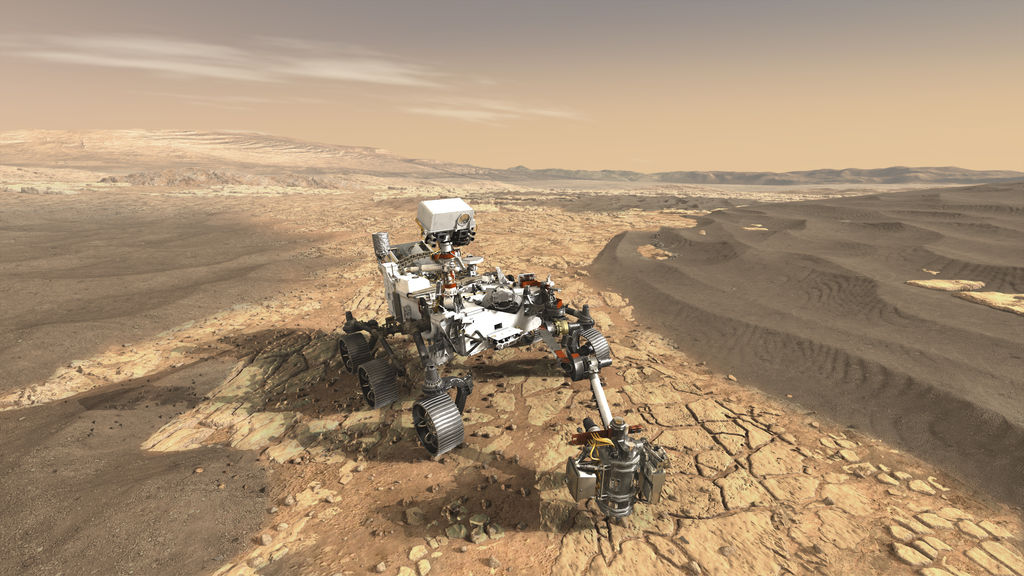York’s very own Allan I. Carswell Observatory held a virtual watch party on February 18 for the descent of NASA’s Perseverance rover onto the surface of Mars. Online viewers were treated to an enthusiastic afternoon that delved into the history of Mars missions, the role Perseverance has to play in the future of research, and insights from several guests.
Despite fraught final minutes known as the “seven minutes of terror”, the rover successfully completed its $2.7 billion, 292.5 million mile, and seven-month-long journey with a flawless landing.
“Everyone is showing a terrific interest — it’s a landing on Mars! We can all band together and become excited over this, the beginning of a mission that will probably last between two to 10 years,” said Professor Paul Delaney, the director of the York University Astronomical Observatory.
“This afternoon is just a huge ride — particularly for the science community — but everybody loves astronomy, and everyone loves Mars, too. This is a great afternoon for NASA — and the rest of the planet,” he added.
Perseverance is NASA’s fifth Mars rover and bears technology similar to its beloved predecessor, Curiosity, which touched down in 2012. This time, however, its technology is significantly improved. The rover is the most advanced microbiology laboratory to ever reach another planet, and it also comes with a few distinct firsts. It carries Ingenuity, the first helicopter to fly on another planet, and it will also be able to make the first-ever sound recordings on Mars.
As time ticked towards the landing, Professor Elaina Hyde of the physics and astronomy department went in-depth about the unique role Perseverance has to play.
“There are a bunch of different science and measurement goals that Perseverance has,” Hyde said. “In particular, there’s four main goals, which are looking for habitability, seeking biosignatures, caching samples, and also preparing for humans. So if you’re interested in humans on Mars, you want to test oxygen production from the Martian atmosphere — this mission will help you with that.”
The rover landed in the Jezero Crater, a 28-mile crater that was home to a Martian lake over three billion years ago.
During the event, Hyde shared a satellite map of the crater, and discussed what Perseverance would be seeking out upon a safe landing.
“We can see that as we get closer and closer on the map, there seems to be some signs of water going into that crater. And if that’s true, maybe there used to be life in that old water. The sediments, the clays, the carbonates, are exactly the kinds of places that we’d expect to find life if we look for it in Earth’s types of dried-up riverbeds,” she said. “So maybe Perseverance will be lucky, and we’ll find some there.”
The program reached the main event as Perseverance began its blistering descent, speeding through the Martian atmosphere at over 19,000 kilometres per hour.
“I’ve got one ear on our broadcast, one ear on NASA, and every finger and toe crossed that you can imagine,” said Delaney within the last few minutes of the landing. “Fingers crossed that all of the literally years worth of preparation for just this moment pay off.”
Luckily for the fingers and toes of viewers, Perseverance prevailed. Viewers at York’s launch party were tuned into the NASA broadcast for the final portion of the event, so they were able to see the joy, exhilaration, and overwhelming relief in the control room at 3:55 p.m.
“Touchdown confirmed. Perseverance is safely on the surface of Mars, ready to begin seeking the signs of past life,” said Swati Mohan, guidance, navigation and controls operations lead for the Perseverance mission.
As the viewing party wrapped up, Delaney made sure to stress the incredible importance of this event.
“We’ve grown accustomed to these sorts of successes,” he said. “Let us not forget that going to Mars is hard.”
“Getting to Mars, getting it onto the ground, really is a hard thing to do. And the fact that NASA makes it look so easy is just terrific.”


